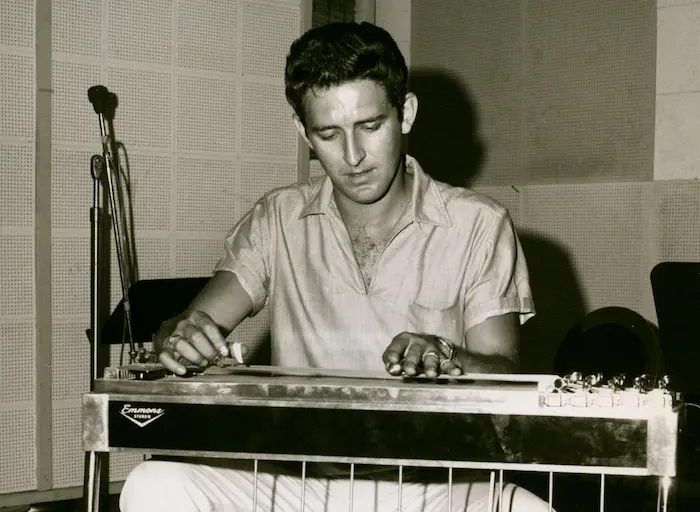Country music is known for its distinct sound. One of the most recognizable features is the “twangy” sound. This twang comes from a specific instrument. It gives country music its unique flavor. This instrument is the steel guitar. In this article, we will explore the steel guitar. We will look at its history, construction, and impact on country music.
I. The History of the Steel Guitar
The steel guitar has a rich history. It originated in Hawaii in the late 19th century. It was invented by Joseph Kekuku. He discovered a new way to play the guitar. He used a metal bar to slide over the strings. This created a unique, smooth sound. This technique became known as “slack-key” or “Hawaiian” guitar playing.
The steel guitar made its way to the mainland United States in the early 20th century. It quickly became popular in country music. Musicians were drawn to its distinctive sound. The steel guitar added a new dimension to the genre. It complemented the vocals and other instruments perfectly.
II. Construction of the Steel Guitar
The steel guitar is different from a regular guitar. It has a unique construction. There are several types of steel guitars. The most common types are the lap steel and the pedal steel guitar.
1. Lap Steel Guitar
The lap steel guitar is played horizontally. It is placed on the musician’s lap. It has six to eight strings. The musician uses a metal bar, called a “steel,” to press the strings. The bar is slid up and down the strings. This creates the twangy sound.
2. Pedal Steel Guitar
The pedal steel guitar is more complex. It is played on a stand. It has more strings than the lap steel guitar. It also has pedals and knee levers. These pedals and levers change the pitch of the strings. This allows for more musical expression.
III. Steel Guitar Techniques
Playing the steel guitar requires special techniques. These techniques are different from those used on a regular guitar. Here are a few key techniques:
1. Sliding
Sliding is the most basic technique. The player slides the steel bar up and down the strings. This creates smooth, continuous notes. Sliding is used to play melodies and harmonies.
2. Vibrato
Vibrato is achieved by shaking the steel bar slightly. This creates a wobbling effect. Vibrato adds expression to the music. It is used to sustain notes and add emotion.
3. Harmonics
Harmonics are high-pitched, bell-like tones. They are produced by lightly touching the strings at specific points. Harmonics add a shimmering quality to the music. They are often used in solos and intros.
4. Blocking
Blocking is a technique used to mute unwanted strings. The player uses the palms or fingers to block the strings. This allows for clean, precise playing. Blocking is essential for fast, intricate passages.
IV. The Role of the Steel Guitar in Country Music
The steel guitar plays a crucial role in country music. It adds a distinctive sound that defines the genre. The steel guitar is used in various ways. It can play melody lines, harmonies, and solos. It can also provide a background texture. The steel guitar’s versatility makes it an essential part of country music.
1. Early Country Music and the Steel Guitar
In the early days of country music, the steel guitar was a novelty. Musicians experimented with its sound. One of the earliest pioneers was Leon McAuliffe. He played with Bob Wills and His Texas Playboys. McAuliffe’s steel guitar playing became a hallmark of Western swing music. His song “Steel Guitar Rag” is a classic example of early steel guitar music.
a. The Nashville Sound
In the 1950s and 1960s, the steel guitar became a staple in the Nashville Sound. This style of country music was smoother and more polished. Producers like Chet Atkins and Owen Bradley used the steel guitar to create lush arrangements. The steel guitar added a sweet, melodic sound to country music hits.
2. Modern Country Music and the Steel Guitar
The steel guitar continues to be a vital part of modern country music. Artists like Alan Jackson, George Strait, and Brad Paisley use the steel guitar in their music. The instrument has evolved, but its twangy sound remains essential to the genre.
V. Notable Steel Guitarists in Country Music
Several steel guitarists have made significant contributions to country music. Here are a few notable players:
1. Speedy West
Speedy West was a pioneering steel guitarist. He played with artists like Tennessee Ernie Ford and Loretta Lynn. West was known for his fast, intricate playing style. He helped popularize the pedal steel guitar.
2. Buddy Emmons
Buddy Emmons is considered one of the greatest steel guitarists of all time. He played with Ray Price, Ernest Tubb, and Willie Nelson. Emmons was also an innovator. He made several improvements to the pedal steel guitar. His contributions have had a lasting impact on the instrument.
3. Lloyd Green
Lloyd Green is another legendary steel guitarist. He played on numerous hit records in the 1960s and 1970s. Green’s smooth, melodic playing style has influenced many steel guitarists.
VI. The Future of the Steel Guitar in Country Music
The steel guitar has a bright future in country music. The instrument continues to evolve. New players are pushing the boundaries of what the steel guitar can do. The twangy sound of the steel guitar will always be a defining feature of country music.
See Also: Top 20 Greatest Country Songs of All Time
VII. Conclusion
The steel guitar’s twangy sound is timeless. It has shaped the sound of country music. It has also influenced other genres. The steel guitar’s unique construction and playing techniques set it apart. Its rich history and bright future ensure that it will continue to captivate musicians and listeners alike. The steel guitar is more than an instrument. It is a symbol of musical innovation and creativity.

